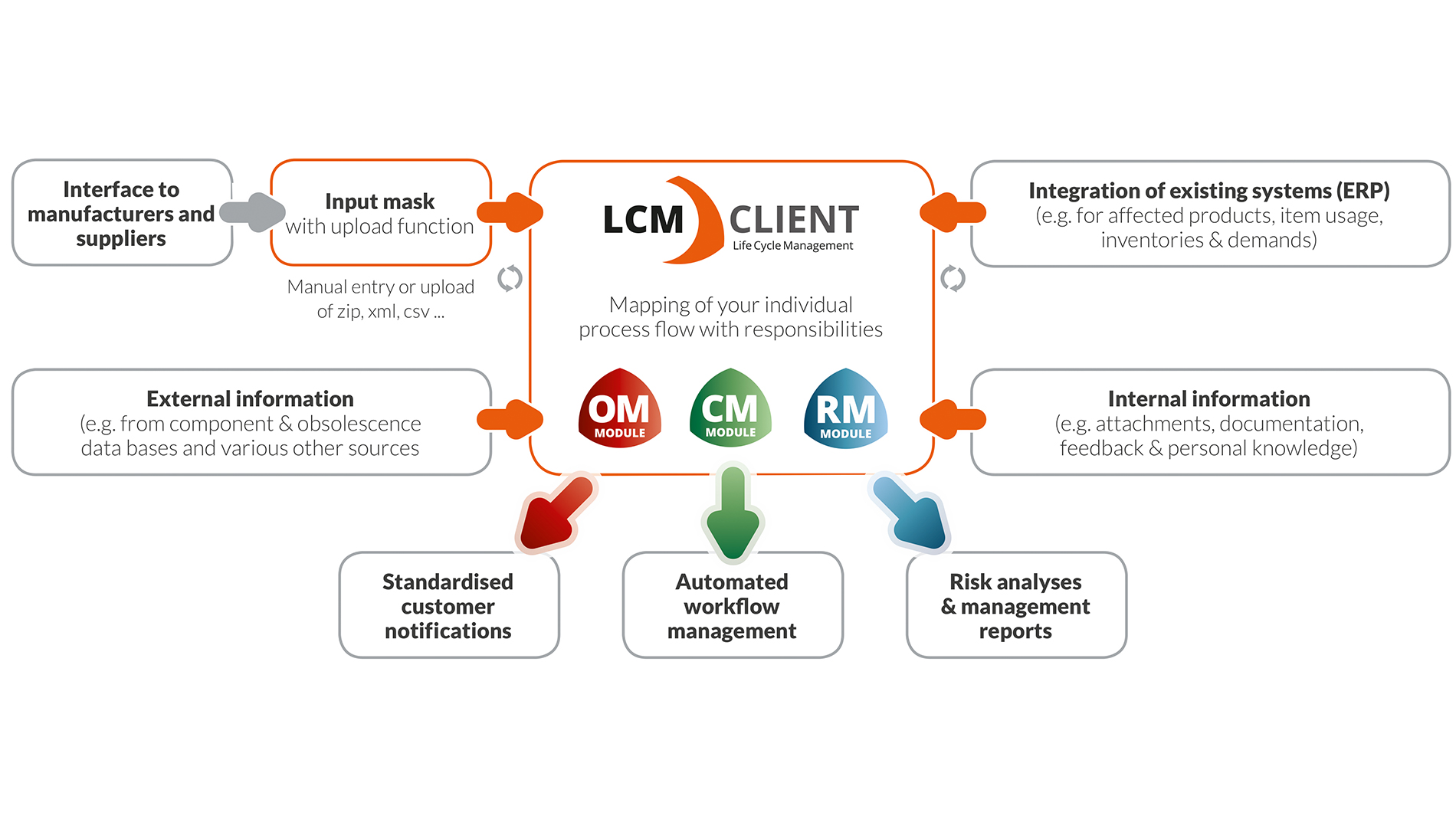How big is the importance of obsolescence in the electronics industry?
Mr. Bartels: Very big – and it is underestimated too often. The problems and additional costs resulting from discontinued components are known to all companies and are nothing new. Various effects have worked as accelerators in the electronics industry in recent years, caused by constant progress and ever shorter innovation cycles. These include the continuous increase of electronics in plants triggered by trends such as IoT, Industry 4.0, increasing software integration, etc. as well as increasingly complex supply chains.
Are companies responding adequately to this development?
Mr. Bartels: Some do, but all companies where obsolescence management is not yet an integral part of the corporate strategy are taking on growing and incalculable risks and produce unnecessary costs.
What challenges do companies face in actual practice?
Mr. Sprickmann Kerkerinck: This differs greatly and depends on the degree of obsolescence management employed. There are usually no unplanned difficulties, if the lead times are contractually defined, which a manufacturer assigns to a product discontinuation notice (PDN) and provides to their customers for development of solution strategies as well as contents of a PDN. However, experience has shown that this is not the case. Research shows that more than 40% of obsolete components have been discontinued without notification. In addition, there is no standard form of communication of discontinuations either, which makes automated processing impossible. As a result, companies often face the problem of recording and prioritizing incoming PDNs as well as defining solution strategies.
What would be a better way to handle this?
Mr. Sprickmann Kerkerinck: There are different approaches possible here. To improve communication along the supply chain, solutions based on the standard sheet 24903 issued by VDMA at the beginning of 2018 have proved their worth. A standard for information exchange management for obsolescence was created, which regulates the content, deadlines and format of a PDN. Building on this, for example, we developed a free PCN generator, which can be used to create, edit and send change and discontinuation notices in a standardized, machine-readable format.
If obsolescence management is to become part of the corporate strategy, then other measures are certainly necessary ...
Mr. Bartels: ... of course, the right people have to become aware of the topic. That's why we developed a comprehensive concept. On the one hand, we provide the know-how through training sessions and seminars, so that companies can keep the planned life cycle costs of industrial goods within a defined framework. On the other hand, we provide tools such as the Life Cycle Management (LCM) Client and consulting services for the effective development of strategies in obsolescence (OM), change (CM) and risk management (RM) according to company-internal processes.

That sounds like change and complexity ...
Mr. Bartels: ... correct: many companies need to rethink and face these challenges at all levels. Because the replacement of electronics in increasingly complex systems is becoming more and more complex and the frequency of discontinuation is continuing to increase, the right conditions must be created. It is essential that companies become more aware of the implications of the problem and that obsolescence is no longer seen only as a topic for the development and purchasing departments, but also for the management. As it has been repeatedly demonstrated in actual practice, the key to success is a strategic approach, including the creation and implementation of obsolescence management plans in conjunction with automated software.
Tags
- Solutions
- Processes
- Standards
- Product management
- Risk management
- Components


